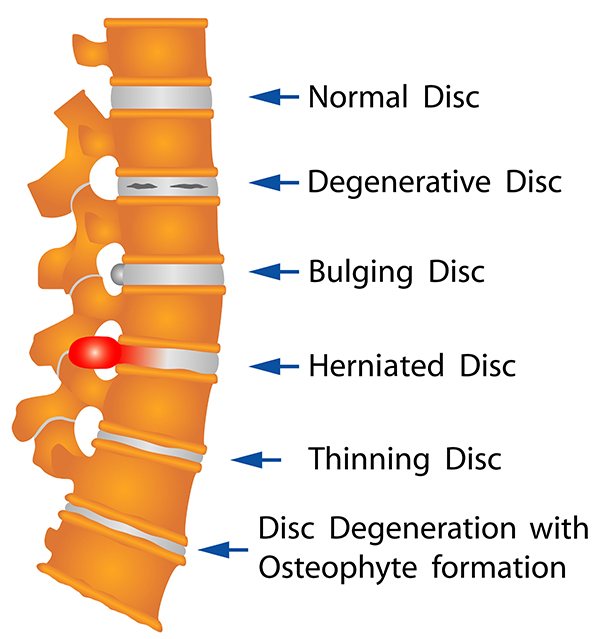HERNIATED DISC
Herniated Disc
The backbone is made up of many vertebrae and classified into four distinct sections. Between each vertebra is fibrous disc with a jelly-like core. The disc is a combination of a strong connective tissues which hold one vertebra to the next, and acts as a cushion. The disc is made of a tough outer layer called the “annulus fibrosus” and a gel-like center called the “nucleus pulposus.” These cushions allow the human body to twist, bend, flex, extend and perform normal daily activities. As we age, the center of the disc may start to lose water content, making the disc less effective as a cushion, and possibly resulting in displacement of the disc’s center. A herniated disc, also known as a slipped or ruptured disc, occurs when a fragment of the disc's nucleus pushes out of the annulus into the spinal canal. When this happens, the disc may cause pressure on a nerve root, resulting in pain. Activity, aging or a mechanical problem in the spine can cause a disc bulge or herniation.
Symptoms of a Cervical Herniated Disc may include:
- Intermittent or continuous neck pain radiating to shoulder blade and arms
- Numbness or weakness in the arm or forearm
- Tingling sensation in hands or fingers
Symptoms of a Lumbar Herniated Disc may include:
- Intermittent or continuous back pain radiating to buttock or legs
- Numbness or weakness in the legs
- Changes in bladder or bowel functions
- Muscle spasms in the lower back

